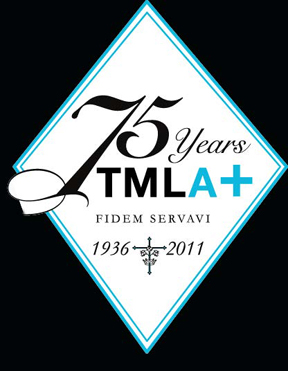 |
 |
 |
 |
|
For seventy years, the tall, brick school standing on one of the highest hills in Queens has been a distinctive part of the skyline. Despite the increasing number of buildings, it is a landmark that can be seen clearly from the Long Island Railroad trains. This is very appropriate because tradition has it that it was while traveling on the Long Island Railroad in the early 1930’s, Mother Mary Louis, General Superior of the Sisters of St. Joseph, first gazed upon the untouched hilltops of the countryside of Jamaica and selected that as the site for a school. Although Mother Mary Louis passed away on May 22, 1932, her dream of establishing an academy for young women in the Jamaica Estates area lived on in the hearts and minds of her congregation of sisters. The first students were fifty-seven young women who were greeted by a faculty of eight sisters on the first day of school on September 14, 1936. Classes were held in the Mary Louis Convent adjoining the school while plans for the permanent building were formulated. The completed school building, housed at the address of 176-21 Wexford Terrace in Jamaica Estates, New York, took shape over a period of two years and finally opened its doors on October 16, 1938. The stated purpose of the Academy was to educate young women to take their places in society and contribute to the world. To achieve this purpose, a demanding academic program was introduced. From the very beginning, a variety of extra-curricular activities extended the interests of the students. Mariel, the school newspaper, published its first issue in 1936. Glee Club and Orchestra, the Drama Club Genesians, and the language clubs fostered student talents. The Athletic Association sponsored field days and many intramural events. The Christmas Pageant, sponsored by the Sodality, became an annual event. The reputation for academic excellence at TMLA quickly spread. So many young women sought to be educated here, that less than twenty years after its founding, the school’s population had outgrown the building. In 1956, the new wing was opened and the capacity of the school was doubled. The old cafeteria became the Music Complex, and many classrooms, a new Biology Lab, a new cafeteria, a Home Economics Complex and a locker room were added. During the 1960’s and 1970’s, the Academy knew many more changes in curriculum and the use of physical space. Resource Centers were created, a new Art Studio was built, and the Library was extended. Computer Science was introduced, and Computer Rooms were opened. In the 1990’s, focusing our vision toward the education of today’s student who must meet the challenges of the 21st century, two state-of-the-art computer labs were added and the Chemistry and Physics/Earth Science Labs were completely refurbished. In addition to the new labs, computers had been added to resource centers, classrooms and the Library. Technology plays an ever-expanding role in the pedagogical practices at Mary Louis today. In the mid-1930’s it was considered a heroic act of faith to establish a school. In the midst of The Great Depression, when the prevailing spirit was one of pessimism, building a school was a statement of belief in the future, and in the contributions of Catholic education to that future. The founders of Mary Louis were women of great faith and vision. They saw the women who graduated from Mary Louis as a force for good in society. The Mary Louis woman would make a difference. And she has. |
|
|
Directory |